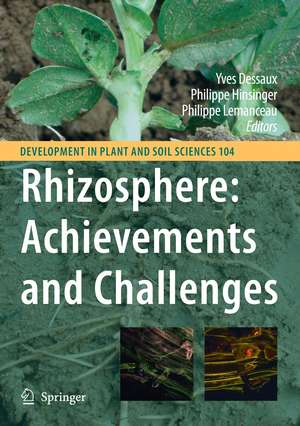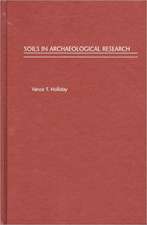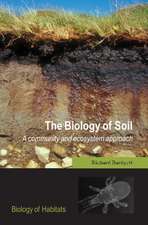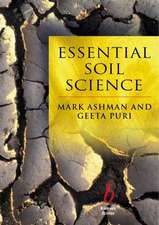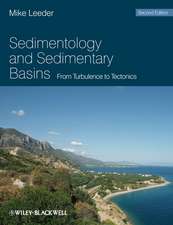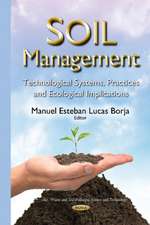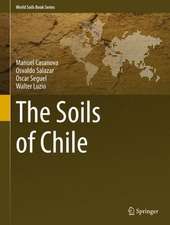Rhizosphere: Achievements and Challenges: Developments in Plant and Soil Sciences, cartea 104
Editat de Yves Dessaux, Philippe Hinsinger, Philippe Lemanceauen Limba Engleză Paperback – mar 2012
| Toate formatele și edițiile | Preț | Express |
|---|---|---|
| Paperback (1) | 1073.79 lei 38-44 zile | |
| SPRINGER NETHERLANDS – mar 2012 | 1073.79 lei 38-44 zile | |
| Hardback (1) | 1069.44 lei 38-44 zile | |
| SPRINGER NETHERLANDS – 4 dec 2009 | 1069.44 lei 38-44 zile |
Din seria Developments in Plant and Soil Sciences
- 18%
 Preț: 1225.94 lei
Preț: 1225.94 lei -
 Preț: 391.79 lei
Preț: 391.79 lei - 18%
 Preț: 1225.94 lei
Preț: 1225.94 lei - 18%
 Preț: 1228.29 lei
Preț: 1228.29 lei - 18%
 Preț: 1246.95 lei
Preț: 1246.95 lei - 24%
 Preț: 1073.19 lei
Preț: 1073.19 lei - 18%
 Preț: 970.70 lei
Preț: 970.70 lei -
 Preț: 396.24 lei
Preț: 396.24 lei -
 Preț: 386.81 lei
Preț: 386.81 lei - 15%
 Preț: 699.93 lei
Preț: 699.93 lei -
 Preț: 384.86 lei
Preț: 384.86 lei - 18%
 Preț: 1221.69 lei
Preț: 1221.69 lei - 18%
 Preț: 1233.06 lei
Preț: 1233.06 lei -
 Preț: 399.12 lei
Preț: 399.12 lei - 18%
 Preț: 1227.67 lei
Preț: 1227.67 lei -
 Preț: 383.93 lei
Preț: 383.93 lei - 18%
 Preț: 1826.85 lei
Preț: 1826.85 lei - 18%
 Preț: 1232.09 lei
Preț: 1232.09 lei - 15%
 Preț: 646.94 lei
Preț: 646.94 lei - 18%
 Preț: 1231.47 lei
Preț: 1231.47 lei - 15%
 Preț: 650.55 lei
Preț: 650.55 lei - 15%
 Preț: 638.24 lei
Preț: 638.24 lei - 18%
 Preț: 955.08 lei
Preț: 955.08 lei -
 Preț: 385.61 lei
Preț: 385.61 lei -
 Preț: 382.36 lei
Preț: 382.36 lei -
 Preț: 407.98 lei
Preț: 407.98 lei -
 Preț: 393.35 lei
Preț: 393.35 lei - 18%
 Preț: 1224.54 lei
Preț: 1224.54 lei - 18%
 Preț: 1222.01 lei
Preț: 1222.01 lei - 18%
 Preț: 1228.15 lei
Preț: 1228.15 lei -
 Preț: 382.95 lei
Preț: 382.95 lei - 18%
 Preț: 1227.84 lei
Preț: 1227.84 lei
Preț: 1073.79 lei
Preț vechi: 1412.88 lei
-24% Nou
Puncte Express: 1611
Preț estimativ în valută:
205.49€ • 223.14$ • 172.61£
205.49€ • 223.14$ • 172.61£
Carte tipărită la comandă
Livrare economică 18-24 aprilie
Preluare comenzi: 021 569.72.76
Specificații
ISBN-13: 9789400730922
ISBN-10: 9400730926
Pagini: 544
Ilustrații: VI, 536 p.
Dimensiuni: 193 x 260 x 29 mm
Ediția:2010
Editura: SPRINGER NETHERLANDS
Colecția Springer
Seria Developments in Plant and Soil Sciences
Locul publicării:Dordrecht, Netherlands
ISBN-10: 9400730926
Pagini: 544
Ilustrații: VI, 536 p.
Dimensiuni: 193 x 260 x 29 mm
Ediția:2010
Editura: SPRINGER NETHERLANDS
Colecția Springer
Seria Developments in Plant and Soil Sciences
Locul publicării:Dordrecht, Netherlands
Public țintă
Professional/practitionerCuprins
Rhizosphere: so many achievements and even more challenges, Dessaux; Carbon flow in the rhizosphere: carbon trading at the soil-root interface, Jones; Nitrogen-fixing bacteria associated with leguminous and non-leguminous plants, Elmerich; Biochemical cycling in the rhizosphere having an impact on global change, Philippot; Plant-microbe-soil interactions in the rhizosphere: an evolutionary perspective, Lambers; Rhizosphere: biophysics, biogeochemistry and ecological relevance, Hinsinger; Plant Root Growth, Architecture and Function, Hodge; The rhizosphere zoo: An overview of plant-associated communities of microorganisms, including phages, bacteria, archaea, and fungi , and of some of their structuring factors, Jurkevitch; Rhizosphere fauna: the functional and structural diversity of intimate interactions of soil fauna with plant roots, Bonkowski; Plant-driven selection of microbes, Schmid; Rhizosphere microbiota interfers with plant-plant interactions, Duponnois; Molecular communication in the Rhizosphere, Faure; Acquisition of phosphorus and nitrogen in the rhizosphere and plant growth promotion by microorganisms, Richardson; The rhizosphere: a playground and battlefield for soilborne pathogens and beneficial microorganisms, Raaijmakers; Rhizosphere engineering and management for sustainable agriculture, Dessaux; Rhizosphere processes and management in plant-assisted bioremediation (phytoremediation) of soils, Wenzel; Novel approaches in plant breeding for rhizosphere-related traits, Wissuwa; Strategies and methods for studying the rhizosphere - The plant science toolbox, Neumann; Sampling, defining, characterising and modeling the rhizosphere - The soil science tool box, Luster; Molecular tools in rhizosphere microbiology - from single-cell to whole-community analysis, Sorensen; Iron dynamics in the rhizosphere as a case study for analyzing interactions between soils, plants and microbes, Lemanceau.
Textul de pe ultima copertă
Described by Hiltner over a century ago (1904), the rhizosphere is defined as the fraction of soil influenced by plant root activities. This dynamic, complex interface where soil, plant roots and microbes interact is a major hotspot of microbial activity, where numerous subtle molecular processes, as well as multiple feedback events take place, Rhizosphere investigations at the microscopic scale have driven spectacular academic advances in the fields of soil sciences or plant-microbe interactions. They bear promises in terms of environmentally-friendly procedures such as bioremediation or ecological engineering. The long recognized role of rhizosphere processes in plant nutrition and health, and more generally in plant adaptation to stress conditions, is now becoming central for designing sustainable management practices of agricultural and forest ecosystems. The rhizosphere, however, must also be considered and investigated at a much larger scale than its own, especially as a location where important steps of both carbon and nitrogen cycles occur, with obvious links with global changes. Major advances in understanding the rhizosphere have been achieved over the last two decades. Combined expertise in plant biology, microbial ecology and soil sciences and design of research strategies including the latest innovative methods in these fields opens exciting prospects for the future.
Caracteristici
This book provides a holistic view of the rhizosphere, keeping in mind its unique functioning that implies numerous, strong and complex interactions between plant roots, soil constituents and microorganisms Classic reference books in this domain such as Curl and Truelove (1986) and Lynch (1990) have been written before the development of the molecular biology era and our knowledge of rhizosphere functioning has considerably expanded since then The scope of the present book project is broader than the above as it also addresses how small scale processes that occur in the rhizosphere relate to processes at much broader scales such as global biogeochemical cycling of elements for instance None of the most recent books on the rhizosphere [Pinton et al. (2001 and 2007); Varma et al. (2004); Mukerji et al. (2006); Cardon and Whitbeck (2007)], although published after the start of the molecular era have been providing a holistic picture of the rhizosphere, each addressing more specifically its links with, respectively, biochemistry, biogeochemistry-global ecology, microbial diversity. In contrast, this book is based on the deliberate choice not to focus on one specific component, in order to provide a holistic picture of the rhizosphere The ambition of this book is to provide prospective insights and identify potentials for innovative rhizosphere management options for ecological engineering of ecosystems
